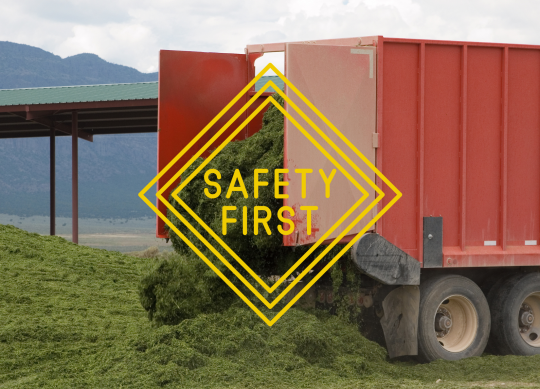Silage Safety: A year-round job
Silage piles and bunkers are common fixtures around livestock operations, but even the most experienced crews can become complacent. Simple safety reminders can help reduce the potential of injury for both farm employees and visitors.
“It’s important for every visitor to clearly understand basic safety as soon as they enter the farm,” says Bob Charley, Ph.D., Forage Products Manager, Lallemand Animal Nutrition, North America. “The farm crew understands the rules, yet we all need reminders to keep safety top-of-mind. We must respect the equipment we’re using and the size of the structures we’re creating.”
Dr. Charley recommends producers follow seven basic tips:
- Keep a safe distance. Never stand closer to the silage face than three times its height. Never park vehicles or equipment in front of the feedout face. Use signs to communicate safe distances.
- Inspect cautiously. Do not take core samples if the feedout face is more than eight feet tall. Always obtain samples and inspect using a loader bucket.
- Feedout correctly. Never dig the bucket into the bottom of the silage. This can create an overhang. Never drive the unloader parallel to, and in close proximity of, the feedout face in an over-filled bunker or pile.
- Bring a buddy. Work in pairs around silage structures.
- Wear a safety vest for easy visibility.
- Use caution when removing plastic, tires, tire sidewalls, or gravel bags.
- Do not fill higher than unloading equipment can reach.
Simple signage can help direct visitors and remind employees, Dr. Charley notes. Along with additional signage, it’s important to have safety protocol meetings with employees throughout the year to talk about anything on the operation that has changed and also for reminders of protocols already in place.
“The best prevention is communication,” he says. “Even well-constructed silage piles or bunkers can be dangerous. At the end of the day, we want everyone to go home to their families. We can’t eliminate every risk, but we can help.”



